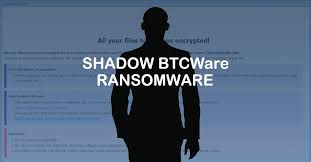Ransomware Shadow
What is Shadow?
The type of cryptography used by Shadow is unknown. The popped-up ransom message informs the victims about current situation and asks them to a pay a ransom in Bitcoins or Dollars, to restore the encrypted files. They also provide an email address to contact the Shadow's developers.
However, sending money to cybercriminals simply encourage their malicious activities. They often ignore their victims and there is a high chance that files will not be decrypted even after the reception of the said ransom. Unfortunately, files encrypted by Shadow cannot be restored with the present tools as of now. The only way to restore everything is via backup.
Note- The backup file must be stored in a remote server (like Cloud) or in an external storage, otherwise the ransomware might infect the backup as well.
How does it works?
Hence, the cybercriminals tricks the users into downloading and installing the malware. Fake software update tools exploits the bugs or flaws of an outdated software and corrupt the system. Trojans are the simplest, as they simply open "backdoors" for malware to infiltrate the system.
How to protect against these ransomwares?
- Don't open attachments from suspicious email addresses and delete them without reading.
- Download applications from official sources only.
- Stay up-to-date and use legitimate antivirus or antispyware suite.
- Store backup in a remote server or an external storage.
- Train regularly to handle these situations.
- Update and maintain the backups regularly.




Comments
Post a Comment